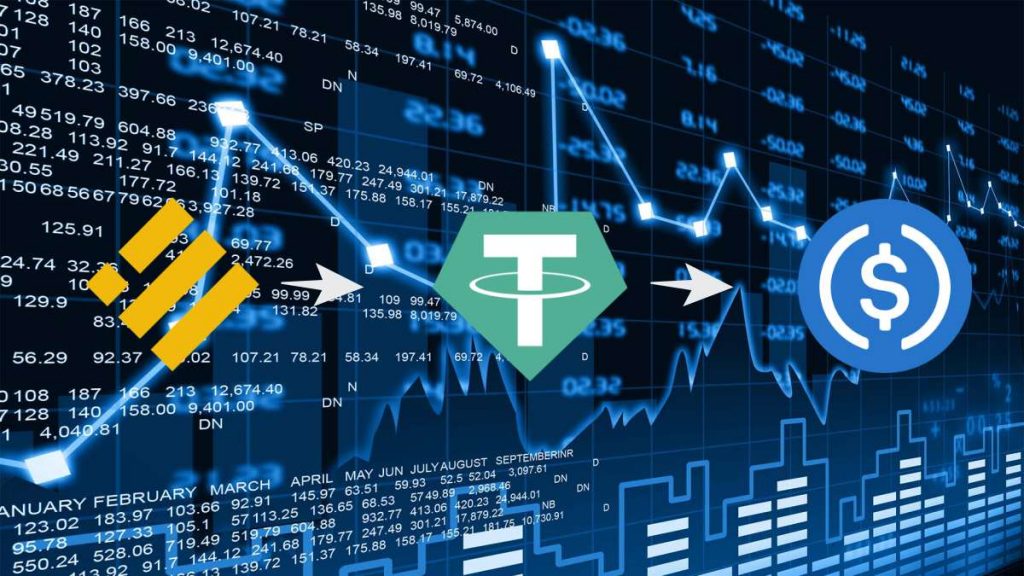There’re plenty of stablecoins you will find in a cryptocurrency market. But, the biggest ones by market cap are BUSD, USDT, USDC and DAI.
The increasing popularity of these stablecoins is attributed to their functionality since they offer fast processing, increased privacy and security, which comes with the cryptocurrencies, and price stability of the fiat currencies.

Why are there Plenty of USD Stablecoins?
The biggest USD stablecoins in the market capitalisation are BUSD (Binance USD), USDT, USDC & DAI. However, why are there plenty of stablecoins pegged at USD when all achieve the same thing? Well, different stablecoins function on the different blockchains and facilitate access to various crypto assets. Whereas one token equals $1, and they vary in liquidity, features, and fundamental values.
What’s USDC?
The USDC or USD Coin was initially launched by Centre Consortium in 2018, powered by a huge cryptocurrency exchange Coinbase & Circle Internet Financial. The USD Coin is the only stablecoin supported by Coinbase at present. It is built on an Ethereum blockchain as an ERC-20 token.
From July 2021, the USD Coin has become the top coin on each exchange and has over $26.8 billion in supply (from $518 million in 2020), and it holds over 23% of the market share for various stablecoins. Today it is the biggest coin out there and continuing to build serious momentum in the next few years.
Check out this bitcoin equaliser app to start your first free trading account!
How does the USDC Work?
Being powered by the ERC-20 contract, USD Coin is in Ethereum blockchain as well as is supported on various other blockchains like Solana, Algorand, Tron, and Stellar. It’s the open-source project that makes it the verifiable and transparent stablecoin on a blockchain.
Transparency will be given by the regular audits operated to make sure that the circulating supply of the USDC equals an amount of USD that is held in the reserve bank accounts. The procedure works just by sending this USD to the bank accounts that are used for creating the equal amount of the USDC through smart contract & sent back to its user.
What’s USDT?
Tether or USDT is widely accepted as a stablecoin project. Better known as the MasterCoin, an idea was first conceived in 2012 and was launched by Bitfinex in 2014. It is a fiat-collateralized currency, which means its value will be 1:1 to US$.
With more than $54 billion in supply USDT accounts for 58% of total stablecoin supply (that is below 60%). It has the 3rd biggest cryptocurrency by the market cap as of now and it is a reigning king of stablecoins.
How does the USDT work?
The USDT is generally governed by Tether Limited and makes it the centralised stablecoin today. When it comes to the proof of funds, the critics have raised a few concerns on Tether’s transparency in the last some years, since it was a bit ambiguous as to what USDT is backed. But, the issue was later settled after the legal dispute that began in the year 2019 by the NY Attorney General.
Recently Tether has published the attestation report offering the complete composition of their reserves just to prove their commitment to transparency. Over half of them are held in commercial paper, the form of corporate lending and the rest is made from fiduciary deposits, reverse repo notes, cash, and treasury bills.
Even though there is controversy around the USDT, Tether guarantees that the USDT is completely backed. You can check the balances published, and USDT circulation is regularly checked through the protocol of Omni Layer on its Bitcoin blockchain.
Which is the Right Stablecoin to Opt For?
Even though USDT has the higher market volume and cap, most economists might not consider this to be the best stablecoin out there. The reason behind the trust is gaps in the auditing and transparency of the USDT.
BUSD and USDC have higher transparency compared to USDT. Furthermore, they are comparable to the USDT in the terms of blockchain and exchange rate. Therefore, USDT is the better choice for the people who mainly prefer investing in the cryptocurrency with higher volume or liquidity, whereas BUSD and USDC are preferable only if you value proper transparency.
